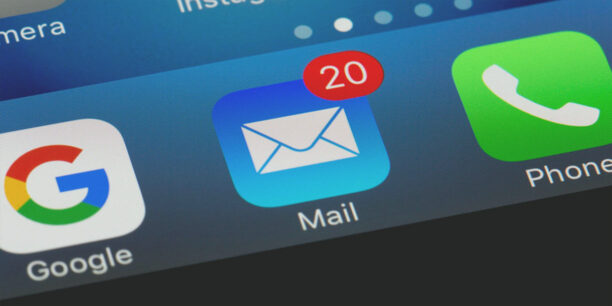The ABC’s of Advanced Email Marketing Strategies

Request a Demo
Learn how top nonprofits use Classy to power their fundraising.
Email marketing, like many other marketing efforts, is never really over. There’s always room for improvement and optimization. While email marketing sometimes involves a one-time messages, it is often a series. More sophisticated plans involve an advanced decision tree network of emails, which are sent to users based on specific behaviors they have taken or you wish them to take in response to your content.
At the end of the day though, email marketing is ultimately about sending the right content at the right moment to the right readers. Whether your email strategy is still in its infancy or is already a-well-oiled machine, there are some advanced email marketing strategies you should consider implementing.
Here are 3 simple, but powerful, email marketing strategies to take your nonprofit’s communications to the next level.
A is for A/B testing.
With most email marketing services today, the ability to execute an A/B test is quite easy. It may even be a part of your current email strategy. However, it’s easy to fall into a rut and find yourself testing the same thing with every send. Subject lines are a great place to start, but they shouldn’t be where A/B testing ends.
Think of A/B testing as an opportunity to test every last element in your email. Testing options include:
- Logo placement
- Font color
- Size and text of your headline
- Layout
- Call-to-action (CTA) button or CTA text
- Personalization
- Content, and so much more!
Check out this great post from Email Monday on 150+ A/B test ideas if you’re looking for inspiration for potential tests to run.
The key to insightful and meaningful A/B tests is to have a plan. To build your plan, start with answering these high-level questions:
- What are you trying to measure? (This is your test plan.)
- How will you measure success? (This is your test metric.)
- What is your control? (This is your baseline.)
From there you can create and implement a series of tests that will tell you how to make your emails more effective.
B is for Bounce Rate.
Bounce Rate is often overlooked, but it’s a critical metric to monitor across all your email marketing efforts.
Many email providers will calculate metrics such as bounce rate, open rate, and click rate for you. Bounce rate is the percentage of emails sent that do not actually reach the desired recipient. It ultimately affects your deliverability rate and the goal across all of our email efforts is a healthy deliverability rate. (High deliverability rates mean more eyeballs have the opportunity to read your email.)
There are two types of bounce rates: soft bounce rate and hard bounce rate. Soft bounce rates represent those emails which the email server rejected the attempted email send and could be from out of office settings, full inboxes, or other less critical reasons. On the other hand, hard bounce rate represents the number of emails that could not go through and likely is due a false email address or one that does not actually exist. A high hard bounce rate is a red flag and may indicate a need to clean up your database (more on that in the next section) and is a good reminder to make sure you’re acquiring email addresses through channels relevant to your business.
For both hard and soft bounce rate, you’re seeking low percentage rates, definitely under 1%. MailChimp publishes email marketing benchmarks and provides averages by company size and industry for soft and hard bounce rates. It’s a good place to start evaluating your data points. Keep an eye on your email bounce rates and make sure they continue to stay at or under industry standards. An increasing bounce rate or a bounce rate that changes to a particular email segment over time, is an indication that your email list needs some cleanup.
C is for Cleanliness.
Data cleanliness is not always top of mind, but it’s an important part of sound email marketing. The natural tendency, particularly when building your donor base or audience list, is to email your entire database with every send. However, using email segments can help you keep your lists really clean while you build your email database since you can target people right away with the information they are most interested in reading. With segmentation, you’re able to maintain an ongoing data cleansing methodology without too much trouble. While we understand the strategy, email segmentation is critical to driving up your email metrics, and a continuous data cleansing methodology is important to define for your organization.
For example, at Classy, we clean our monthly newsletter lists on an ongoing basis and remove recipients who haven’t opened a newsletter email from us in the last three months. While we’d love to see our list size always growing, it’s more important to us that we don’t oversaturate a person’s inbox with emails they aren’t reading.
It can be a significant achievement to gather a person’s email address so we want to treat these email addresses with white gloves. Isn’t it a better strategy to keep sending our recipients content that provides value to them versus content they are not even opening? By cleaning our monthly email list, we can send those email addresses who aren’t engaging with our monthly newsletter a more relevant email, like an important product announcement or other exciting news.
Often times your email marketing software will have unique tools built into the product to help you use data to keep your database clean. Services like Constant Contact and MailChimp, for example, allow you to easily create lists of readers who have opened recent emails or who have been emailed in a certain time period. Many tools also allow readers to opt-out of specific email types. Empowering the reader to choose the content they wish to receive will also maximize your ability to keep your database clean.
BONUS: D is for Dynamic content.
Dynamic content is content that appears to a specific reader based on some set of defined criteria. In other words, with dynamic content, you can send one email to multiple list segments but define specific content to be displayed to specific lists. The easiest way to look at dynamic content is to imagine it working like the ultimate vending machine. With dynamic content, you’re able to select groups of people based on known information or behaviors to receive very specific pieces of content.
Dynamic content gives you the ability to orchestrate an effort behind the scenes that ideally delivers content most relevant to that user. This helps to build trust with your organization and will drive higher engagement with your emails. It’s like a vending machine where the user doesn’t choose but somehow the machine knows exactly that the purchaser wants corn chips over popcorn.
Dynamic content gives you the ability to make any email appear hyper personal and relevant while still being able to communicate with large groups of people. According to a study conducted by The Aberdeen Group, 96% of organizations believe that email personalization is the key to improving email marketing performance and that personalized emails improve click through rates by 14%, and conversion rates by 11%.
If you’re not already using dynamic content, here are a few tricks to getting started:
- Map out which pieces of content in your email would ideally change based on the reader
- Based on the content that would change, create email segments that map to this content
- Where possible, personalize your email with data from your database to make the experience more relevant to your reader. Bonus tip: Go beyond the person’s first name! Think big when it comes to personalization opportunities.
There you have it! The ABCD’s of advanced email marketing strategies. After reading through this post, where do you see an opportunity for your organization? Where might you get started? We’d love to hear from you about what email marketing strategies are helping you grow your organization.
Write Emails that Activate Supporters
Subscribe to the Classy Blog
Get the latest fundraising tips, trends, and ideas in your inbox.
Thank you for subscribing
You signed up for emails from Classy
Request a Demo
Learn how top nonprofits use Classy to power their fundraising.
 Explore Classy.org
Explore Classy.org 


